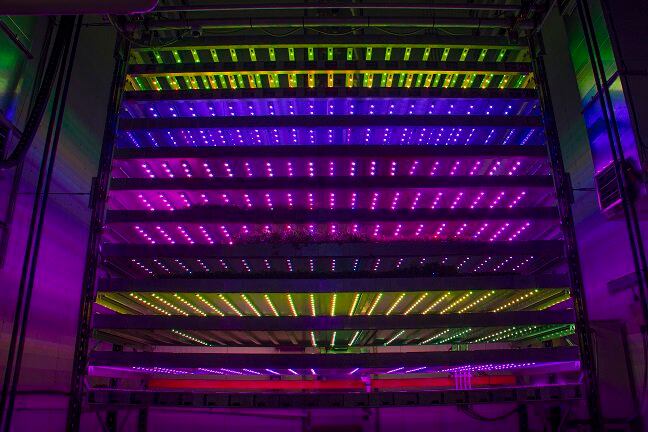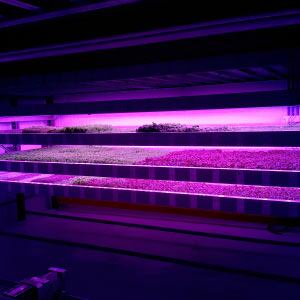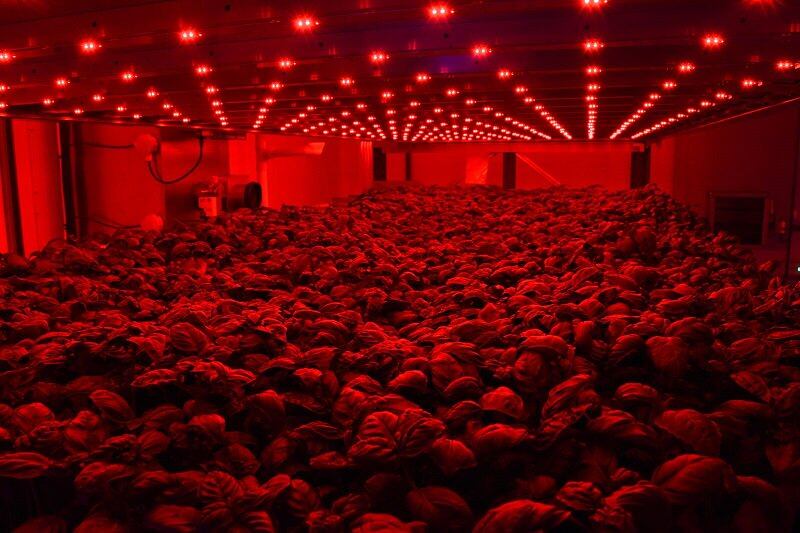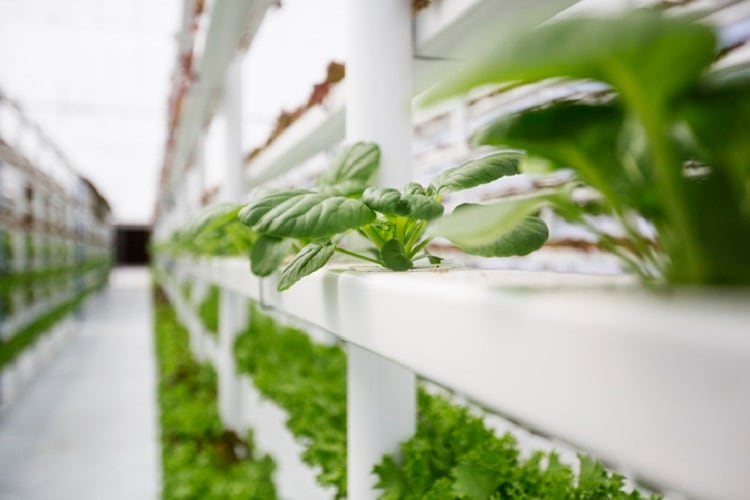Indoor agritech specialist IGS has completed a deal with new vertical farming operator Vertegrow to establish a four-tower vertical farm system in Aberdeenshire, Scotland.
The 245 m2 insulated facility will accommodate four nine-metre-high towers alongside a 1,600 square metre service area on Vertegrow’s site at Waterside Farm in Aberdeenshire. This will provide approximately 1,343 m2 of growing space, producing up to 70 tonnes of produce per annum when fully operational.
The site will initially produce leafy greens, with experiments planning in other crops planned, Vertegrow director Graeme Warren told FoodNavigator. “Crops grown at the new facility will include basil and other herbs, salad such as rocket, brassicas and chillies. The team at Vertegrow is also planning to trial a range of different crops in the vertical farm,” he explained.
The towers, which are expected to be operational in early 2021, will service the local food supply chain. Vertegrow will work with a range of local customers including retailers, caterers, restaurateurs and other local services, to deliver fresh, nutritious, high-quality produce all year round.
Ag tech for food security
Vertegrow was established through Steadman Partners, the UK-based private investment office set up by BrewDog co-founder Martin Dickie.
This is the first move into vertical farming for Vertegrow, diversifying alongside existing agricultural operations, currently growing crops including barley and rye in open fields.
Warren explained the company believes investment in ag tech is vital to deliver food security after weaknesses in extended global food chains were highlighted during the COVID-19 crisis. He also believes that such investment will be crucial to delivering a ‘green food recovery’ in the wake of the economic turmoil caused by the pandemic.
“One of the absolute priorities for every country in the world which has arisen from the COVID-19 situation is food security. Agritech has a large part to play in this and solutions like vertical farming are being sought to deliver sustainable national food security strategies and to help contribute to a green food recovery. The new wave of agritech innovation can help move this agenda forward effectively,” he explained.
What benefits does vertical farming in particular offer? The production system provides a ‘secure, controlled, indoor environment, independent of weather and location’ to provide a ‘sustainable, secure food supply across a range of crops’, we were told.
“Vertical farming offers a progressive, modern way to complement traditional farming methods, so that the planet can sustain the increased demand for food placed on it by an ever-growing population. As farmers and other growers put greater emphasis on sustainable food security and surety of supply chain, vertical farming is being recognised as an increasingly valuable way to diversify and drive efficiency,” Warren argued.
IGS CEO David Farquhar agreed that the need to build resilience through a focus on local sourcing is a global trend that has arisen from the COVID crisis. “Such re-localisation of the food supply chain is a feature of post-coronavirus planning we are seeing all over world,” he noted.
Vertical farming ‘addresses a number of challenges’
Warren suggested that vertical farming also delivers a number of other benefits, including consistent supply of high-quality crops.
“It allows crops to be grown consistently, to a high quality and all year round in any location,” he elaborated. “Traditionally, the climate in North East Scotland means that there is a short growing season and many crops cannot be viably grown at certain times of year, or at all. Consumers now expect fresh produce all year round and so that requires imported crops and high food miles.”
Nutritional quality is also central to Vertegrow’s ambition. “Vertegrow is passionate about quality, flavourful and nutritious food – these are all features which vertical farms can help us achieve.”
Among other technical developments, IGS is working on developing crops that are high in particular vitamins or nutrients by varying light levels.

How sustainable are vertical farms?
Vertegrow selected the IGS platform because it was considered to be the most ‘advanced, efficient and scalable’ option to meet Vertegrow’s requirements.
Scotland-based IGS has developed a plug-and-play vertical farming product designed to maximise productivity whilst minimising energy consumption and allowing the production of consistently high-quality produce at scale.
According to IGS’s chief executive, the system offers ‘key environmental benefits’ around land use, productivity and water use.
“The total annual output of two 9-metre-high growth towers is equivalent to one crop cycle from one hectare of open field or greenhouse farm,” Farquhar told FoodNavigator.

“On average, an increased yield of 2-3 times that of greenhouse or open-field farming per metre squared of growth area, per annum (dependent on crop type). Accounting for the vertical nature of the IGS system, this equates to 15 times the yield of a greenhouse per m2 of footprint.”
The company has been able to achieve a reduction in water usage of up to 96% through the use of a closed-loop irrigation system. And the controlled atmosphere means there is no need for pesticides, fungicides or biocides, Farquhar continued.
The technology also means ‘zero emissions to the atmosphere, land or groundwater courses’.
Because vertical farming systems rely on LED lighting, there is some concern that high energy use could undermine some of these environmental claims. However, Farquhar said IGS’s technology has been developed to address this issue. “IGS’ vertical farming platform delivers Totally Controlled Environment Agriculture (TCEA) capable of reducing energy usage by up to 50%,” he explained.
Warren added that this aspect was important for Vertegrow, which aims to produce a carbon neutral crop. “The vertical growing system also allows crops to be grown efficiently - without pesticides and with lower inputs of energy and water. These features together are critical to achieving our aim of ultimately growing nutritious crops in a carbon neutral way,” he claimed.
Alongside these benefits – and despite significant up-front investment requirements - Vertegrow expects that the efficiency of the system will enable it to deliver vegetables at a similar price to conventionally grown alternatives.
Warren elaborated: “Vertegrow believes that to be competitive in a globalised food chain, indoor grown crops which are grown locally will need to be sold at a price which is in line with other high quality but traditionally grown crops – consumers will not tolerate a higher price for crops simply because they are grown in a vertical farm. Vertegrow does however believe that the efficiency of the system will allow that price point to be achieved.”




